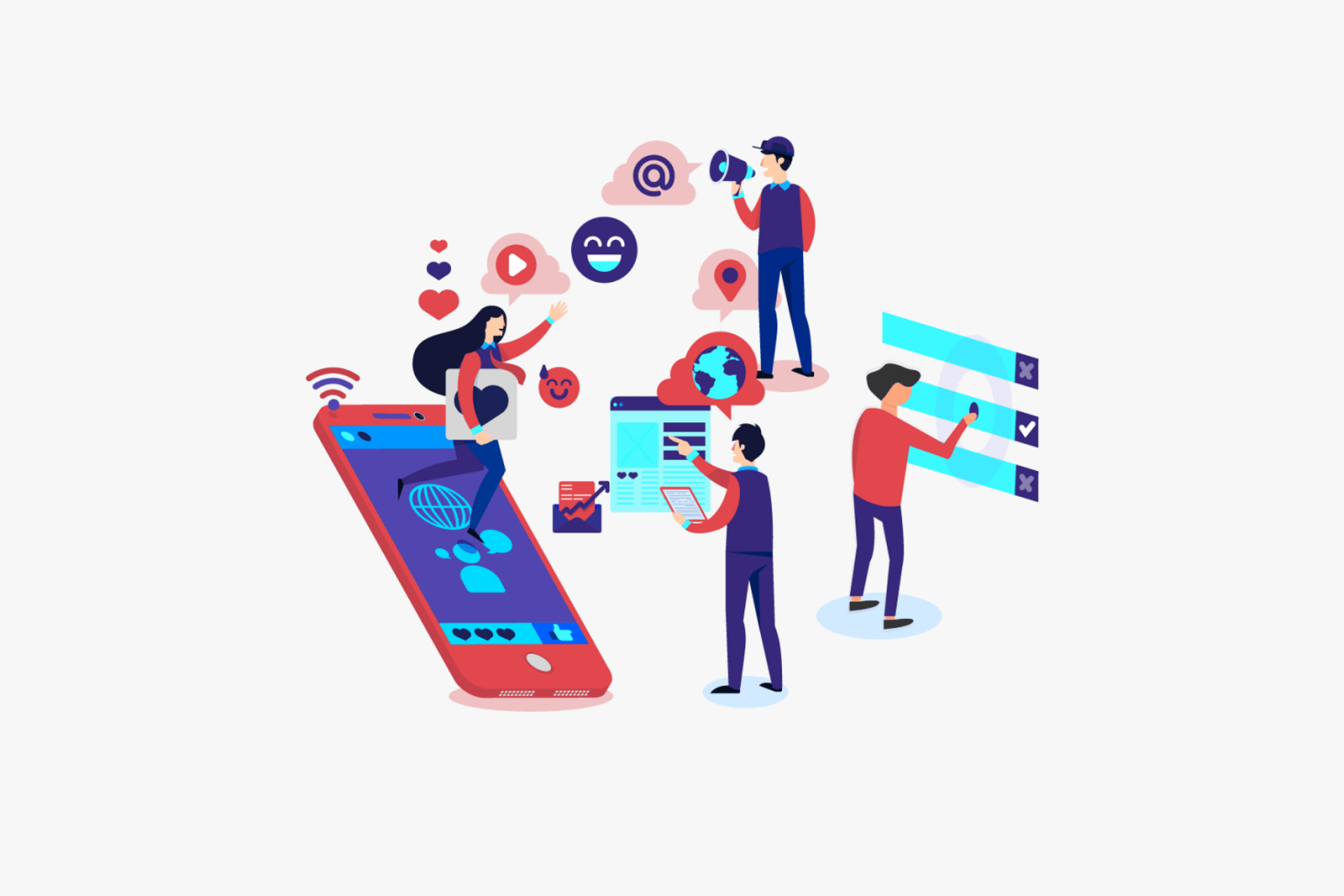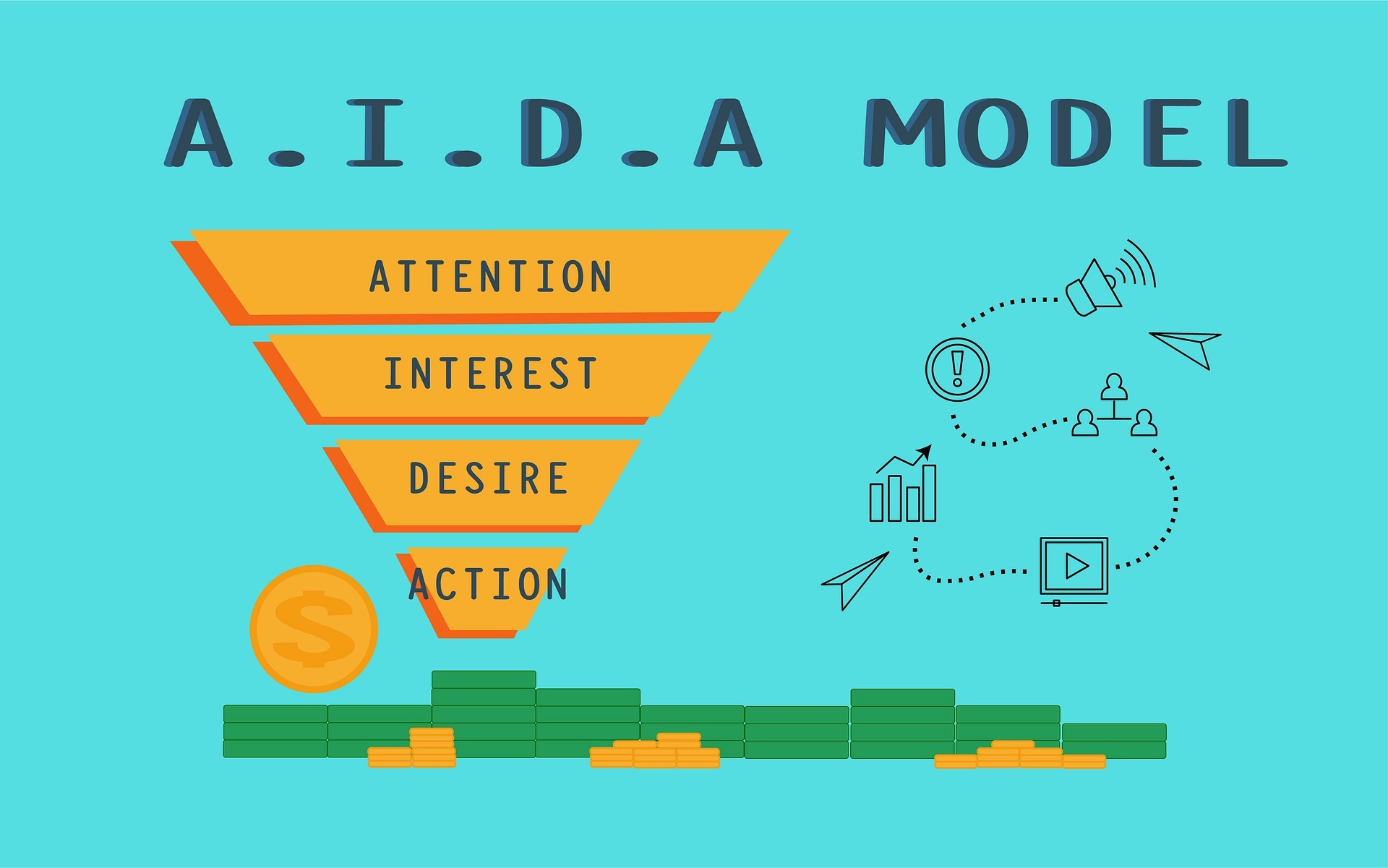Digital marketing is one of the fastest-growing industries in the UK today and with no signs of stopping, we want to break down and explain the basics of the digital marketing world. As a digital marketing company, we want to touch upon and explain the world in which we operate.
The Digital marketing world is littered with complex and sometimes confusing jargon. But don’t worry, we’re here to explain the digital marketing basics.
Table of Contents
Digital Marketing Definition
Digital Marketing, also known as online marketing, is any marketing that has been created and published for the online world. Examples include email marketing, social media marketing, pay-per-click advertising, and blogging.
When did digital marketing begin?
Digital marketing is a fairly contemporary industry that began in the world of advertising and traditional marketing. Digital marketing first starting becoming a thing after the internet came into our lives in 1991. Back then, it mostly involved using channels like email.
And just like that, email became the hottest new marketing medium and outbound tool. Not long after, early digital marketers soon clocked on to what we now know as SEO by using keywords, backlinks, and tagging to generate a high ranking on search engines.
However, once social media channels like Facebook, Linkedin, Myspace and Twitter, arrived, the marketing landscape changed forever. Due to this rise in social media channels, digital marketing changed and the emphasis on inbound marketing became more apparent.
Social media allowed for the ability of information sharing, user-centered material and design, as well as the ability for users to share this content. As a result of all this sharing and interaction, big data was made available. This allowed marketers to track trends and patterns which allowed for a more data-heavy and driven type of marketing.
Types of digital marketing
Digital marketing has come a long way since the days of just email. Now, there are several disciplines that seem to keep on growing. Here are some of the core types of digital marketing used today:
- Search Engine Optimization (SEO) – The practice of increasing the quantity and quality of website traffic through organic (non-paid) search engine results.
- Content Marketing – Blog posts, whitepapers, and infographics.
- Social Media Marketing – The promotion of your brand through social platforms like Facebook, Twitter, and LinkedIn.
- Pay Per Click (PPC) – Driving traffic to your website by paying a publisher, like Google Ads, to advertise for you.
- Affiliate Marketing – Paying programme partners to promote a companies product to earn a commission on sales.
- Native Advertising – Also known as ‘Sponsored Content’. These are ads that fit in with the website they appear on, therefore giving them a feeling of being content rather than promotional material.
- Marketing Automation – The software used to schedule social posts, email newsletters, campaign tracking, and reporting, and lead generating.
- Email Marketing – Newsletters, blog subscriptions, loyalty programs are all promoted through email marketing.
- Online PR – The acquisition of online coverage through linking with publications and blog sites.
- Inbound Marketing – The marketing methodology in which you attract, engage and delight your customers through every stage of the buying process.
Digital Marketing Funnel
A digital marketing funnel represents the steps a user takes from being a prospect to a customer. Digital marketing funnels are useful for marketers to understand users needs and actions at every stage. This can inform decisions on how to target consumers with different forms of advertising.
AIDA marketing funnel
The traditional marketing funnel came in the form of AIDA, created by St Elmo Lewis way back in 1898. AIDA stands for:
- Awareness – this is the start of the user journey when they first see and become aware of your brand. This could be by finding your social media page or seeing you appear on a Google search results page (SERP).
- Interest – the second stage involves highlighting the benefits of a product and or service so that the customer becomes more interested and researches. This is the step they take when they’ve reached your website and are viewing your products and or services.
- Desire – This third stage involves a customer becoming more attracted to your company and product. This can be achieved by them viewing your social channels and ‘about us’ page in order to emotionally connect with you as a brand.
- Action – This final stage involves action directly from the customer. The customer now wants to buy your product and or service. This is the point where they contact you.
These four stages were used for a long time to map out the journey of a person becoming a customer. However, there is now a new method that works very similarly but with slight differences.
The Looping Digital Marketing Funnel
The new model is often called a ‘Looping Digital Marketing Funnel’, and works like this:
- Awareness – The first step the modern-day customer now takes is often triggered when they become aware of a problem or need.
- Consideration / Research and Discovery Loop – This next stage often involves the customer wanting to find a solution to the problem or need. They will often go on to research for solutions and discover your product and or service along the way.
- Purchase – This third stage is when they purchase your product and or service. This has solved their problem or need.
- Post-purchase experience / Loyalty Loop – In modern-day customers eyes, the process doesn’t stop after purchasing. Shopper loyalty is often built through schemes and how confident they are in your product and or service. This will usually bring the customer back to you time and time again.
The new model has been created for many reasons – one being that technology has changed the way customers buy products. Thanks to the rise of the internet and smartphones; the change was inevitable. The old model was far too linear for the modern consumer journey, so, people stopped using it.
Now, customers can quickly research the brands and services they are looking to buy from. As marketers, we can target consumers far more effectively for a higher chance of conversion.
Fundamentals of Digital Marketing
The fundamentals of digital marketing are often outshone by the shiny bells and whistles of SEO and PPC. But, without the digital marketing backbone, your efforts are wasted. Here are the core fundamentals that underpin digital marketing:
- Having a website that can effectively and quickly be edited inhouse by a marketing team.
- Continuous and fresh content to create more visits, traffic, and clicks to the company website, which in turn creates revenue.
- Encouraging streams of visitors to click through to view your content, wherever it may be published.
- Good automation using sites such as HubSpot and Mailchimp, which allow companies to automate their marketing to target and nurture prospects into customers.
- Having an effective social face for the company using one or more social channels.
- Implementing monitoring and tracking systems to allow tracking of customer interactions and journeys.
- Using well-optimised conversion processes that map out the journey of a customer.
The 5 D’s of digital marketing
Maybe you prefer a mnemonic, in which case, The Five D’s of Digital Marketing will be right up your street. They cover some further fundamentals of digital marketing, including:
- Digital Devices – The things being used to reach your brand online. For example, laptops, phones, tablets, and smart TVs.
- Digital Platforms – The type of digital platforms that digital marketers use to create interactions between brands and their target customers. For example, social media, search engines, and websites.
- Digital Media – The paid and owned communication channels to help build engagement with the target market. For example, email, social media, and online marketing.
- Digital Data – The customer profiles and engagement patterns with businesses. Digital data gives marketers insights into users’ interests affects their buying decisions. The data is used for cross-selling, improving user experience, and increasing customer buying rate.
- Digital Technology – The type of digital technology like AI, AR, and VR, used to connect with a wider range of consumers in new and exciting ways.
Importance of Digital Marketing
You can’t ignore the importance of digital marketing. Let’s face it, the internet is where most of us spend huge parts of our day. So, by not taking up the opportunity to market yourself online, you are undoubtedly missing out on massive growth and sales opportunities.
If you were to do a quick Google search right now, how many of your competitors are online? Chances are, probably most if not all of them are. If you want to compete, digital marketing is essential. The great thing about digital marketing is that there is a much more level playing field when compared to brick-and-mortar stores. With all of the right digital marketing work, you could potentially rank higher than some big-name brands – that’s nothing short of amazing!
We’ve mentioned it a few times now but only because it’s one of the greatest benefits of digital marketing – targeting. Outside of the digital world, you could take out an ad in a local newspaper, for example. Sure, lots of people will see it but what percentage of those people are your target audience? Realistically, not many. The beauty of digital marketing is that you can target your core audience on a granular level which means all of your time, effort and money is going straight to the people who you want to see it. This is why digital marketing is such a cost-effective way to grow your brand.
Digital marketing statistics
Here are some of our favourite digital marketing facts if you still need some convincing:
- 93% of all online interactions start with a search engine
- Google gets more than 77k searches every second
- 72% of online marketers see high-quality content creation
- 98% of sales reps are reaching their quotas through social selling
- The average consumer attention span is 8 seconds – make your content count!
- Better content can drive traffic to a blog by up to 2,000%
Benefits of digital marketing
Here is a quick summary of some of the key benefits of using digital marketing:
- Cost-effective – This allows digital marketers to spend less and gain more leads.
- Measurable – You can measure our results effectively and decide which areas are best to invest within.
- Target ideal customers – This allows you to cut out the wrong customers and target the customers that will ideally link back to you and purchase our product/service.
- Follow the customer journey from the start – You can reach people from the start to the end of the buying journey.
- Make changes as you – This allows for you or your team to update your content, PPC advertisements, optimize your SEO and tweak your social campaigns in order to get the best and most up-to-date results.
- Improves your conversion rates – Due to being able to target more specific leads you can increase your chances of gaining more conversions.
Are you looking for support with your digital marketing? Our team at Modo25 are specialists in digital marketing and we can work alongside you to grow your inhouse team. Drop us an email at team@modo25.com for an informal chat.






